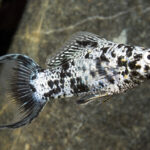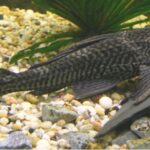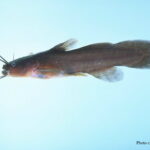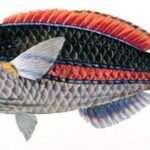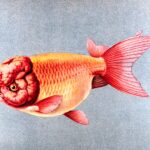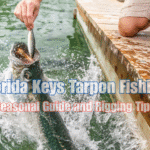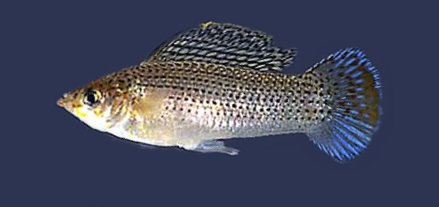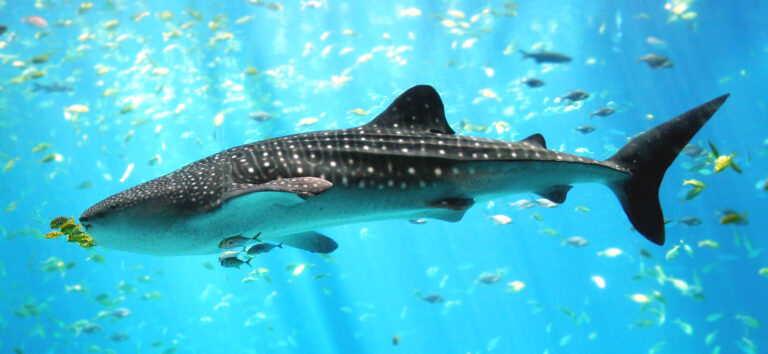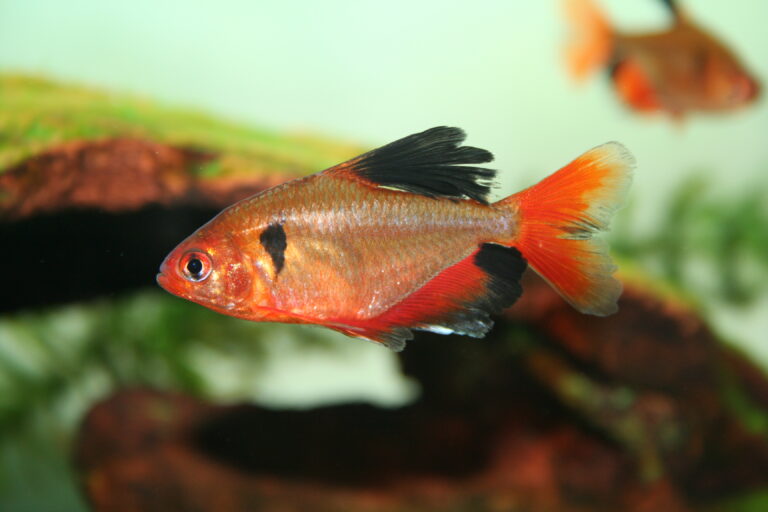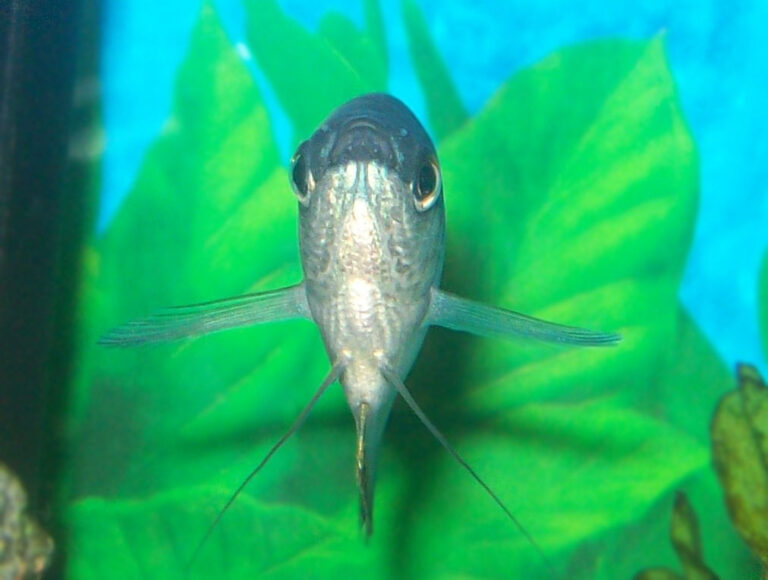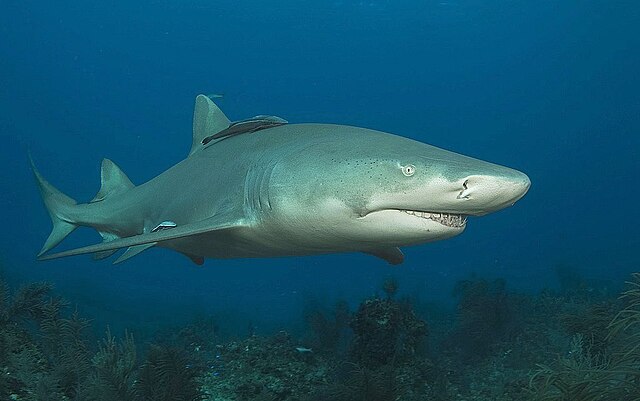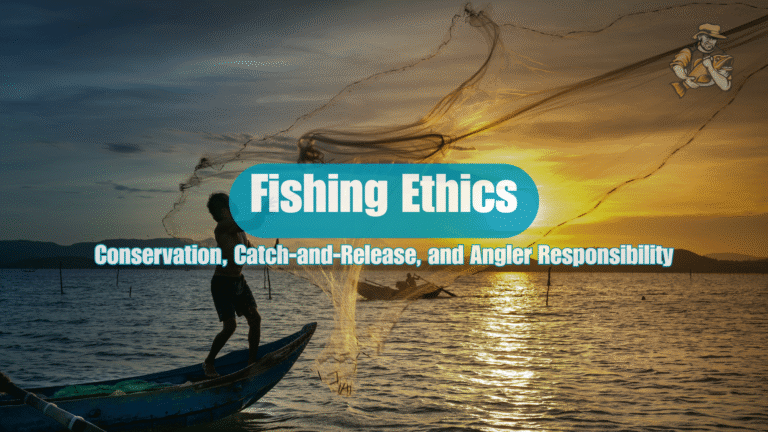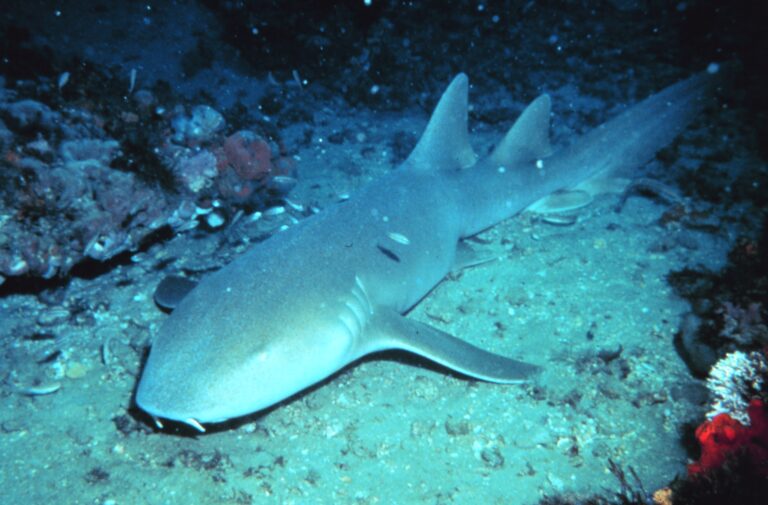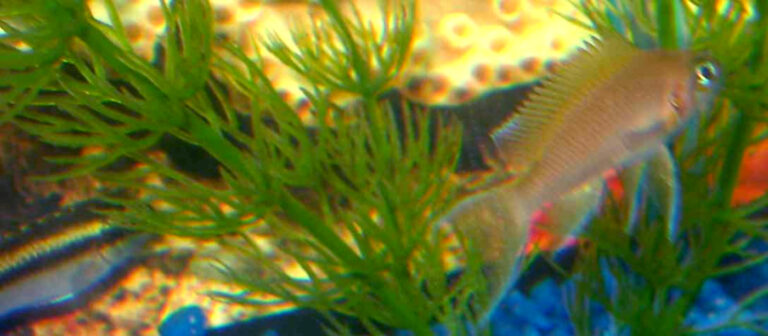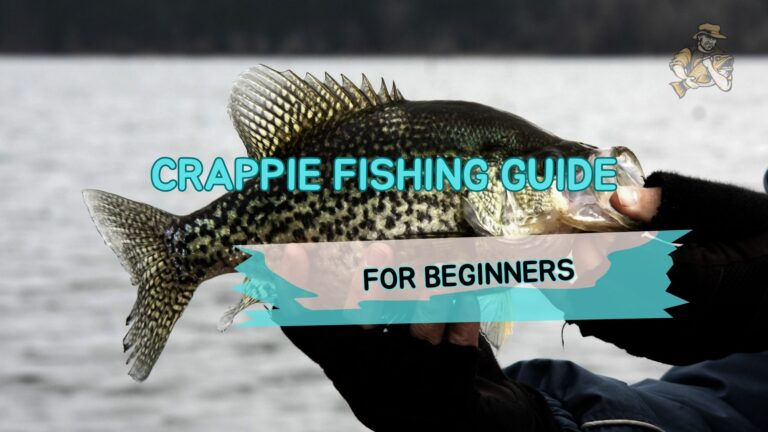Endlers Livebearer
By Ryan Maron | Last Modified: June 11, 2025
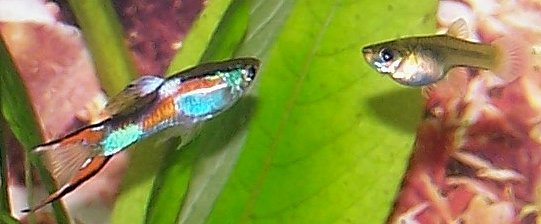
The Endlers Livebearer (Poecilia wingei) stands as one of the most captivating freshwater fish species in the aquarium trade and aquatic biology research. This diminutive yet vibrant species, commonly known as the Endler’s guppy or Endler guppy, represents a remarkable example of adaptive evolution and genetic diversity within the Poeciliidae family. Originally endemic to the coastal lagoons of Venezuela, the Endlers Livebearer has garnered significant attention from marine biologists and aquarium enthusiasts due to its extraordinary color variations, hardy nature, and unique reproductive strategies.
The ecological significance of Poecilia wingei extends beyond its ornamental appeal. In its native habitat, this species serves as a crucial link in freshwater food webs, functioning both as a consumer of microscopic organisms and as prey for larger predatory fish. The species demonstrates remarkable phenotypic plasticity, with wild populations exhibiting distinct genetic lineages that have adapted to specific environmental conditions across their limited geographic range. This adaptive capability has made the Endlers Livebearer an important subject for evolutionary biology studies and conservation genetics research.
| Feature | Details |
| Common Name | Endlers Livebearer |
| Scientific Name | Poecilia wingei |
| Family | Poeciliidae |
| Typical Size | Males: 2.5 cm, Females: 4.5 cm |
| Habitat | Shallow freshwater lagoons |
| Diet | Omnivorous microfeeder |
| Distribution | Northern Venezuela |
| Conservation Status | Vulnerable |
Taxonomy & Classification
The taxonomic classification of the Endlers Livebearer has undergone significant revision since its initial scientific description. Originally discovered by Franklyn F. Bond in 1937, the species remained scientifically unnamed until John Endler’s extensive research in the 1970s brought it to broader scientific attention. The formal scientific description was completed by Poeser, Kempkes, and Isbrücker in 2005, establishing Poecilia wingei as a distinct species within the subfamily Poeciliinae.
Within the family Poeciliidae, Poecilia wingei belongs to the genus Poecilia, which encompasses approximately 40 recognized species of livebearing fish. The species shares its closest phylogenetic relationship with Poecilia reticulata, commonly known as the guppy, leading to ongoing taxonomic debates regarding species boundaries and hybridization potential. Molecular genetic analyses have revealed that P. wingei diverged from P. reticulata approximately 500,000 to 1 million years ago, establishing sufficient genetic distance to warrant species-level distinction.
The subfamily Poeciliinae represents a diverse group of freshwater fish characterized by internal fertilization and viviparity. This reproductive strategy has proven highly successful across tropical and subtropical freshwater environments throughout the Americas. Endlers Livebearer exhibits all the diagnostic characteristics of this subfamily, including the modified anal fin (gonopodium) in males and the specialized reproductive anatomy necessary for internal fertilization and live birth.
Recent phylogenetic studies utilizing both mitochondrial and nuclear DNA markers have confirmed the monophyletic nature of the Poecilia wingei species complex. However, considerable genetic diversity exists within wild populations, suggesting the presence of multiple evolutionary significant units that may require individual conservation attention. This genetic structuring reflects the fragmented nature of the species’ habitat and limited dispersal capabilities between isolated lagoon systems.
Physical Description
The Endlers Livebearer displays remarkable sexual dimorphism, with males exhibiting spectacular coloration while females maintain more subdued appearance patterns. Adult males typically reach lengths of 2.5 centimeters, displaying an array of vibrant colors including metallic orange, electric blue, emerald green, and deep black markings. The characteristic color patterns vary significantly between populations, with some males featuring predominantly orange bodies with black spots, while others display intricate combinations of multiple hues arranged in species-specific patterns.
Female Endlers Livebearer are considerably larger than males, reaching maximum lengths of approximately 4.5 centimeters. Their coloration consists primarily of pale golden or silver tones with subtle darker markings along the lateral line. The gravid spot, a distinctive darkened area near the anal fin, becomes increasingly prominent as females approach parturition. This sexual dimorphism serves multiple evolutionary functions, including predator avoidance for the reproductively valuable females and mate selection facilitation through male ornamental displays.
The body morphology of Poecilia wingei reflects its adaptation to shallow, vegetated aquatic environments. The species possesses a laterally compressed body form with a relatively high back profile, enabling efficient navigation through dense aquatic vegetation. The caudal fin exhibits considerable variation in shape and size, with some populations displaying elongated fins while others maintain more compact proportions. The dorsal fin positioning and ray count serve as important diagnostic characteristics for distinguishing P. wingei from closely related species.
Scale counts and meristic characteristics provide additional taxonomic markers for the species. Endlers Livebearer typically possess 26-28 lateral line scales, with dorsal fin ray counts ranging from 6-8 and anal fin rays numbering 8-10. The pharyngeal teeth arrangement follows the typical poeciliid pattern, adapted for processing small invertebrates and plant material. These morphological features remain relatively consistent across populations despite the significant variation in coloration patterns.
Habitat & Distribution
The natural distribution of Endlers Livebearer is remarkably restricted, limited to a small number of freshwater lagoons and associated waterways in the coastal regions of northern Venezuela. The type locality encompasses the Laguna de Patos and surrounding water bodies near Cumaná, with additional populations documented in nearby coastal lagoons along the Caribbean coast. This extremely limited geographic range makes the species particularly vulnerable to environmental changes and human-induced habitat modifications.
The natural habitat of Poecilia wingei consists of shallow, warm freshwater lagoons characterized by abundant aquatic vegetation and variable salinity levels. Water temperatures in these environments typically range from 24-28°C throughout the year, with minimal seasonal variation due to the equatorial location. The lagoons experience periodic connection to marine environments during high tides or storm events, creating brackish conditions that the species has adapted to tolerate. This salinity tolerance represents an important physiological adaptation that distinguishes P. wingei from many other freshwater poeciliids.
Vegetation density plays a crucial role in shaping Endlers Livebearer habitat preferences. The species shows strong association with areas containing dense growths of submerged and emergent aquatic plants, which provide essential cover from predators and substrate for foraging activities. Common plant species in these habitats include various Potamogeton species, Najas guadalupensis, and seasonal growths of filamentous algae that serve as both habitat structure and food sources for the fish populations.
Water chemistry parameters in natural Endlers Livebearer habitats reflect the coastal lagoon environment, with pH values typically ranging from 7.2-8.5 and moderate to high mineral content. The seasonal dynamics of these systems create fluctuating conditions that have shaped the species’ physiological tolerance ranges. During dry seasons, lagoon water levels decrease significantly, concentrating fish populations and intensifying both intraspecific competition and predation pressure. These environmental pressures have contributed to the evolution of the species’ rapid maturation rates and high reproductive output.
Diet & Feeding Behavior
Endlers Livebearer exhibits omnivorous feeding behavior with a strong emphasis on small invertebrates and microscopic organisms. The species’ diet consists primarily of zooplankton, including copepods, cladocerans, and rotifers, supplemented by benthic invertebrates such as chironomid larvae and small crustaceans. Plant material forms a secondary but important component of the diet, particularly filamentous algae and detritus rich in bacterial populations.
The feeding methodology of Poecilia wingei reflects its adaptation to surface and mid-water foraging. Individuals frequently exhibit surface feeding behavior, capturing small insects and larvae that fall onto the water surface. This feeding strategy proves particularly important during the rainy season when terrestrial arthropods become more abundant in the aquatic environment. The species’ upturned mouth orientation facilitates this surface feeding behavior while also enabling efficient capture of suspended particles in the water column.
Juvenile Endlers Livebearer display feeding patterns distinct from adults, focusing primarily on microscopic prey items appropriate to their smaller mouth size. Newly born fry initially consume bacterial films and protozoa before progressing to larger prey items as they develop. This ontogenetic diet shift ensures optimal growth rates while minimizing competition with adult members of the population. The rapid growth rates observed in young fish directly correlate with the availability of suitable sized prey items in their environment.
Seasonal variation in food availability significantly influences Endlers Livebearer feeding behavior and population dynamics. During the wet season, increased nutrient input and higher water levels support expanded populations of invertebrate prey species. Conversely, dry season conditions concentrate both fish and prey populations, intensifying feeding competition and potentially limiting growth rates. These seasonal patterns have shaped the species’ reproductive timing and energy allocation strategies, with peak breeding activity coinciding with periods of maximum food availability.
Behavior & Adaptations
The behavioral repertoire of Endlers Livebearer encompasses complex social interactions, predator avoidance strategies, and reproductive behaviors that have evolved in response to their specific ecological niche. The species exhibits shoaling behavior, particularly in open water areas where predation risk is elevated. These aggregations typically consist of mixed-sex groups ranging from 10-50 individuals, with shoal composition varying according to habitat structure and predator presence.
Territorial behavior in male Endlers Livebearer becomes pronounced during breeding periods, with dominant individuals establishing small territories around preferred spawning sites. These territories typically encompass areas with dense vegetation that provide cover for approaching females and developing embryos. Male territorial displays involve elaborate swimming patterns, fin spreading, and color intensification designed to attract females while deterring competing males from the area.
The species demonstrates remarkable behavioral plasticity in response to predation pressure. In environments with high predator density, Endlers Livebearer exhibit increased vigilance behavior, reduced foraging activity during daylight hours, and greater reliance on vegetative cover. Conversely, populations in predator-free environments display more conspicuous behaviors and extended periods of open-water activity. This behavioral flexibility has proven crucial for survival in the variable conditions of their natural habitat.
Endlers Livebearer possesses several physiological adaptations that enhance survival in their challenging environment. The species exhibits remarkable tolerance to salinity fluctuations, allowing populations to persist through tidal influences and seasonal changes in water chemistry. Additionally, P. wingei demonstrates efficient oxygen utilization capabilities, enabling survival in the warm, potentially oxygen-depleted waters of shallow tropical lagoons. These adaptations have contributed significantly to the species’ success within its limited geographic range while also making it highly valued in aquarium settings worldwide, particularly among enthusiasts interested in colorful freshwater species.
Reproduction & Life Cycle
The reproductive biology of Endlers Livebearer exemplifies the highly successful livebearing strategy that characterizes the Poeciliidae family. Sexual maturity occurs remarkably early in the species’ life cycle, with males reaching reproductive capability at approximately 2-3 months of age and females becoming gravid shortly thereafter. This rapid maturation strategy represents an evolutionary adaptation to the unpredictable environmental conditions and high predation pressure characteristic of their natural habitat.
The mating system of Poecilia wingei involves complex courtship behaviors initiated by males seeking to attract receptive females. Male courtship displays include rapid swimming patterns, fin erection, and the presentation of their most vibrant coloration. The gonopodium, a modified anal fin structure unique to male poeciliids, serves as the primary copulatory organ for internal fertilization. Successful mating results in the transfer of sperm packets that can remain viable within the female reproductive tract for extended periods, enabling multiple broods from a single mating event.
Gestation periods in Endlers Livebearer typically range from 22-28 days, depending on water temperature and female condition. Pregnant females exhibit progressive abdominal distension and darkening of the gravid spot as embryonic development proceeds. The species demonstrates remarkable fecundity, with mature females capable of producing 10-25 fry per brood. Larger, older females generally produce more offspring, while younger females may have smaller initial broods that increase in size with subsequent reproductive cycles.
The birth process in P. wingei involves the live delivery of fully developed, free-swimming juveniles capable of independent feeding and predator avoidance. Parturition typically occurs during early morning hours in areas with dense vegetation that provide immediate cover for the vulnerable newborns. The lack of parental care following birth necessitates rapid dispersal and immediate foraging behavior by the young fish. This reproductive strategy maximizes offspring production while minimizing parental energy investment, allowing for rapid population recovery following environmental disturbances.
Predators & Threats
Natural predators of Endlers Livebearer in their Venezuelan habitat include a variety of aquatic and semi-aquatic species that exploit different life stages of the fish. Larger fish species such as cichlids, characins, and juvenile marine species that enter the lagoons during tidal exchanges represent the primary piscivorous threats. Aquatic invertebrates including diving beetles, dragonfly nymphs, and predacious copepods prey heavily on juvenile and newly born Endlers Livebearer, often controlling recruitment rates in natural populations.
Avian predators play a significant role in Endlers Livebearer mortality, particularly during periods when fish are concentrated in shallow waters. Wading birds such as herons and egrets, along with kingfishers and other fish-eating birds, can substantially impact local populations. The surface feeding behavior of P. wingei increases their vulnerability to aerial predation, though the species’ small size often limits them to predation by smaller bird species rather than large wading birds.
Anthropogenic threats represent the most severe challenges facing wild Endlers Livebearer populations. Coastal development, pollution from agricultural runoff, and direct habitat modification have dramatically reduced the available habitat for the species. The introduction of non-native fish species, including other poeciliids and cichlids, has created novel competitive and predatory pressures that wild populations struggle to accommodate. Many of the original lagoon habitats have been modified or destroyed entirely through human activities.
Climate change poses emerging threats to Endlers Livebearer through alterations in precipitation patterns, increased storm intensity, and rising sea levels. Changes in the seasonal hydrology of coastal lagoons could disrupt the species’ reproductive cycles and food web dynamics. Additionally, increased hurricane activity in the Caribbean region threatens to cause catastrophic disturbances to the remaining habitat fragments. The species’ extremely limited distribution makes it particularly vulnerable to single catastrophic events that could eliminate entire populations, similar to conservation challenges faced by other endemic freshwater species in tropical regions.
Conservation Status
The International Union for Conservation of Nature (IUCN) has not yet formally assessed the conservation status of Poecilia wingei, largely due to the species’ relatively recent taxonomic recognition and limited research on wild populations. However, preliminary assessments by regional authorities and aquatic conservation organizations suggest that the species should be considered vulnerable or endangered based on its extremely restricted range and ongoing habitat degradation. The total area of occupancy for wild populations is estimated at less than 100 square kilometers, meeting criteria for threatened species classification.
Current conservation efforts for Endlers Livebearer are primarily focused on habitat protection and ex-situ breeding programs. Several international aquarium organizations maintain genetic repositories of the species to preserve the unique characteristics of wild populations. These captive breeding programs serve dual purposes of maintaining genetic diversity and providing potential source populations for future reintroduction efforts. However, the genetic integrity of many aquarium strains has been compromised through hybridization with related species and selective breeding for enhanced coloration.
Venezuelan environmental authorities have begun preliminary efforts to protect critical Endlers Livebearer habitats through coastal zone management initiatives. These efforts include restrictions on coastal development in areas containing known populations and water quality monitoring programs to assess pollution impacts. However, enforcement capabilities remain limited, and many conservation measures exist primarily on paper rather than as effective protection mechanisms in the field.
International cooperation represents a crucial component of future conservation strategies for P. wingei. The species’ popularity in the global aquarium trade provides both opportunities and challenges for conservation efforts. While widespread captive populations ensure the species’ survival in human care, the commercial value has also led to continued collection pressure on wild populations. Establishing sustainable collection protocols and supporting local communities in conservation efforts will be essential for long-term species preservation. Collaboration with tropical freshwater fish conservation initiatives could provide valuable insights for protecting this unique species.
Human Interaction
The relationship between humans and Endlers Livebearer has evolved dramatically since the species’ introduction to the international aquarium trade in the 1970s. John Endler’s initial collection and subsequent distribution of the species to aquarium enthusiasts worldwide sparked intense interest in this remarkable fish. The species quickly gained popularity among aquarists due to its vibrant coloration, hardy nature, and ease of breeding in captive conditions. This popularity has resulted in widespread distribution of captive populations across multiple continents.
Commercial aquaculture of Endlers Livebearer has developed into a significant component of the ornamental fish industry. Large-scale breeding facilities throughout Southeast Asia, Europe, and North America produce millions of individuals annually for the global pet trade. However, most commercial strains have been selectively bred for enhanced coloration and may differ significantly from wild populations in both appearance and genetic composition. This genetic divergence raises important questions about the conservation value of captive populations for potential reintroduction programs.
The species has also gained recognition within the scientific community as a valuable model organism for studies of evolution, behavior, and conservation genetics. Research institutions worldwide maintain laboratory colonies of P. wingei for various research projects investigating topics ranging from sexual selection to adaptive radiation. These research programs have contributed significantly to our understanding of poeciliid evolution and reproductive biology while also providing insights relevant to conservation planning.
Educational programs featuring Endlers Livebearer have proven effective for teaching concepts related to biodiversity, conservation, and responsible pet ownership. Many public aquariums and educational institutions use the species to demonstrate principles of genetics, evolution, and ecosystem function. The species’ rapid reproduction and obvious phenotypic variation make it particularly suitable for hands-on learning experiences that engage students in scientific observation and analysis. However, educational programs must emphasize the importance of preventing escapes that could establish non-native populations in local waterways, much like responsible practices promoted for related livebearing species.
Interesting Facts
One of the most remarkable aspects of Endlers Livebearer biology involves their extraordinary color pattern diversity. Scientists have documented over 20 distinct male color pattern variants within wild populations, each maintained through genetic mechanisms that prevent homogenization despite ongoing gene flow. This phenomenon, known as balanced polymorphism, represents one of the most striking examples of maintained genetic diversity within such a restricted geographic range. The molecular mechanisms underlying this color pattern maintenance continue to intrigue evolutionary biologists worldwide.
The species exhibits an unusual form of sperm storage that allows females to produce multiple broods from a single mating event. Female P. wingei can store viable sperm for up to six months, enabling the production of 8-10 consecutive broods without additional mating. This reproductive strategy provides significant advantages in environments where mate encounters may be unpredictable or where population densities fluctuate dramatically due to environmental conditions.
Endlers Livebearer possesses remarkable regenerative capabilities that extend beyond typical fish healing responses. Individuals can regenerate damaged fins, scales, and even portions of their tail within 2-3 weeks under optimal conditions. This regenerative capacity proves particularly valuable in their natural habitat where predator attacks and environmental hazards frequently cause tissue damage. The cellular mechanisms underlying this regeneration have attracted interest from researchers studying tissue repair and regenerative medicine.
The species demonstrates an extraordinary ability to adapt to diverse water conditions, tolerating pH ranges from 6.0 to 8.5 and hardness levels from very soft to extremely hard water. This physiological flexibility has enabled successful establishment in aquarium systems worldwide and may reflect adaptations to the variable conditions of their natural lagoon habitats. Temperature tolerance ranges from 18°C to 32°C, though optimal breeding occurs within the narrower range of 24-28°C.
Recent genetic studies have revealed that Endlers Livebearer populations contain some of the highest levels of heterozygosity documented in freshwater fish species. This genetic diversity exists despite the species’ limited distribution and small population sizes, suggesting either historical population expansions or extremely effective mechanisms for maintaining genetic variation. Understanding these mechanisms could provide valuable insights for conservation genetics and breeding programs for other threatened species, particularly those with limited ranges similar to challenges faced in sustainable aquarium collecting practices.
Frequently Asked Questions
Can Endlers Livebearer breed with common guppies?
Yes, Endlers Livebearer can successfully hybridize with common guppies (Poecilia reticulata) due to their close genetic relationship. However, these hybrid offspring often exhibit reduced fertility and may not maintain the distinctive characteristics of either parent species. Most serious aquarists and conservation programs maintain strict separation between the species to preserve genetic integrity. Hybrid populations can complicate conservation efforts and make species identification difficult in aquarium settings.
How can you distinguish pure Endlers from guppy hybrids?
Pure Endlers Livebearer typically display specific morphological characteristics including smaller adult size, distinct color pattern arrangements, and particular body proportions. Males usually exhibit metallic coloration with specific pattern elements such as the distinctive “cobra” pattern or orange and black spotting. Genetic testing provides the most reliable method for confirming species purity, though experienced aquarists can often identify pure strains through careful observation of multiple morphological traits and breeding behavior patterns.
What water conditions are optimal for keeping Endlers Livebearer?
Endlers Livebearer thrive in water temperatures between 24-28°C with pH levels ranging from 7.0-8.0 and moderate hardness. They tolerate a wide range of conditions but breed most successfully in stable, well-filtered aquarium systems. Regular water changes and good biological filtration help maintain optimal conditions. The species adapts well to both freshwater and slightly brackish conditions, reflecting their natural habitat variability in Venezuelan coastal lagoons.
Are there any conservation programs specifically for wild Endlers Livebearer?
Several international organizations maintain conservation breeding programs for Endlers Livebearer, focusing on preserving the genetic diversity of wild populations. The Goodeid Working Group and various poeciliid conservation societies coordinate efforts to maintain pure breeding lines and support habitat protection initiatives in Venezuela. However, in-situ conservation efforts remain limited due to political and economic challenges in the species’ native range. Aquarium societies worldwide contribute to ex-situ conservation through careful maintenance of documented bloodlines.
Conclusion
The Endlers Livebearer represents a remarkable example of evolutionary adaptation and genetic diversity concentrated within an extremely limited geographic range. This species serves as both a window into the complex processes of speciation and a urgent reminder of the vulnerability of endemic freshwater fish populations. The ongoing threats to wild populations underscore the critical importance of immediate conservation action combined with continued scientific research. As one of the most genetically diverse fish species relative to its range size, P. wingei offers unique insights into evolutionary biology while facing an uncertain future in its native Venezuelan habitats.
Share The Article:
More Fish Species:
-
Black Molly
The Black Molly represents one of the most recognizable and enduring species in the freshwater aquarium trade, captivating both…
-
Red Devil Cichlid
The Red Devil Cichlid stands as one of Central America’s most formidable and captivating freshwater predators, renowned for its…
-
Whale Shark
The whale shark (*Rhincodon typus*) stands as the ocean’s largest fish species, representing one of nature’s most remarkable gentle…
-
Serpae Tetra
The Serpae Tetra (Hyphessobrycon eques) stands as one of South America’s most recognizable freshwater aquarium species, distinguished by its…
-
Blue Gourami
The Blue Gourami (*Trichogaster trichopterus*) stands as one of the most recognizable and adaptable freshwater fish species in tropical…
-
Lemon Shark
The Lemon Shark (*Negaprion brevirostris*) represents one of the most scientifically studied and ecologically significant predators in coastal marine…
Discover
-
Planning a Family Fishing Trip: Tips for a Hooked-on-Fun Adventure
There’s something almost magical about watching a kid’s face light up when they feel that first tug on their…
-
Pennsylvania Fishing License: Complete Guide for Anglers in 2025
Getting your Pennsylvania fishing license sorted isn’t exactly the most exciting part of fishing, but it’s absolutely necessary if…
-
Fishing Ethics: Conservation, Catch-and-Release, and Angler Responsibility
I was ten years old when my grandfather caught me throwing rocks at a school of bluegill near our…
-
Nurse Shark
The Nurse Shark (Ginglymostoma cirratum) stands as one of the most recognizable and ecologically significant bottom-dwelling sharks in tropical…
-
North Jersey Fishing Guide: Best Lakes, Rivers & Seasons
If you’ve never experienced the fishing in North Jersey, you’re missing out on some genuinely underrated angling opportunities. From…
-
How to Spool a Baitcaster for Beginners: 6 Simple Steps
I remember the first time I tried spooling a baitcaster reel. What should have been a simple 15-minute job…
Discover
-
Best Fishing Spots in California: Lakes, Rivers, and Coastal Hotspots
California fishing has always struck me as a study in beautiful contradictions. From snow-fed alpine lakes to sweltering desert…
-
Sunset Platy
The Sunset Platy (Xiphophorus maculatus), commonly known as the Southern Platyfish, represents one of the most popular and recognizable…
-
Why Your Red Drum Strategy Is All Wrong (Fix It Today)
Last October, I was fishing the eastern shore of Lake Michigan near Ludington with my buddy Mike. Cold front…
-
Kribensis Cichlid
The Kribensis Cichlid (Pelvicachromis pulcher) stands as one of West Africa’s most remarkable freshwater fish species, captivating aquarists and…
-
Crappie Fishing Guide for Beginners | 2025
Crappie fishing might just be one of the most rewarding experiences for new anglers. These popular panfish are abundant,…
-
Kayaking Fishing: Ultimate Guide for Water Adventurers
There’s something magical about gliding across the water in a kayak with a fishing rod in hand. The stealthy…


